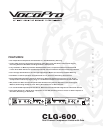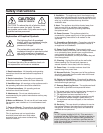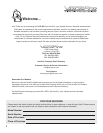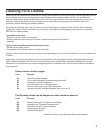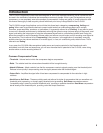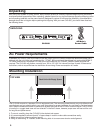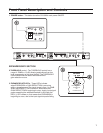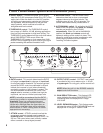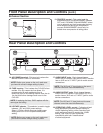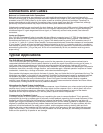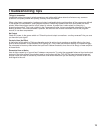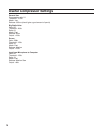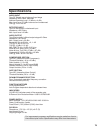
Introduction
5
The CLG-600 Compressor/Limiter/Gate was designed for use in the Karaoke community, but of course can also
be used in the multitude of situations that compressors commonly handle. If this is your first experience using a
compressor, or are completely new to the process of compression, limiting and gating, it is well advised to read
this manual thoroughly to best acquaint yourself with them prior to any live application of the CLG-600.
The CLG-600's range of applications can be divided into three basic categories, compressing, limiting and
gating. When used as a protective device to prevent audio levels from overloading systems such as tape
recorders, power amplifiers, speakers, or transmitters, it is generally referred to as 'Limiting'. It may also be used
to even out a Karaoke performance by deliberately reducing the dynamic range (volume range) of the overall vocal
signal, and setting the output gain to bring the compressed signal back to a normalized volume level. Doing this
allows the operator to avoid unexpected volume peaks and secure a much louder and full sounding vocal signal at
the same time. That is referred to as 'Compressing'. Also common, is the application of completely removing
audible noise from low-volume sections of an audio signal, i.e. fans, air conditioning units, electric hums. This is
referred to as 'Gating'.
In any case, the CLG-600 offers exceptional performance and precise controls for the Karaoke and audio
enthusiasts, and with time and experience, you will soon harness the full potential of the CLG-600, never doing
another show or studio recording without it!
Common Compression Terms
• Threshold - Volume level at which the compressor begins compression.
• Ratio - The relative level the volume above threshold will be brought down by.
• Attack & Release - Attack controls how fast the compressor reacts to signals passing over the threshold point.
Release is how quickly it stops reacting once the signal passes under the threshold again.
• Output Gain - Amplifies the signal after it has been compressed to compensate for the reduction in high
volumes.
• Hard Knee or Soft Knee - These are widely used and referred to styles of compression that can smoothen out
threshold point processing, or abruptly apply threshold point processing. Soft Knee compression uses an
"acceptable range" around a particular threshold point, providing a smoother transition. Hard Knee compression
starts exactly at the threshold point, providing razor-like abrupt transitions.



